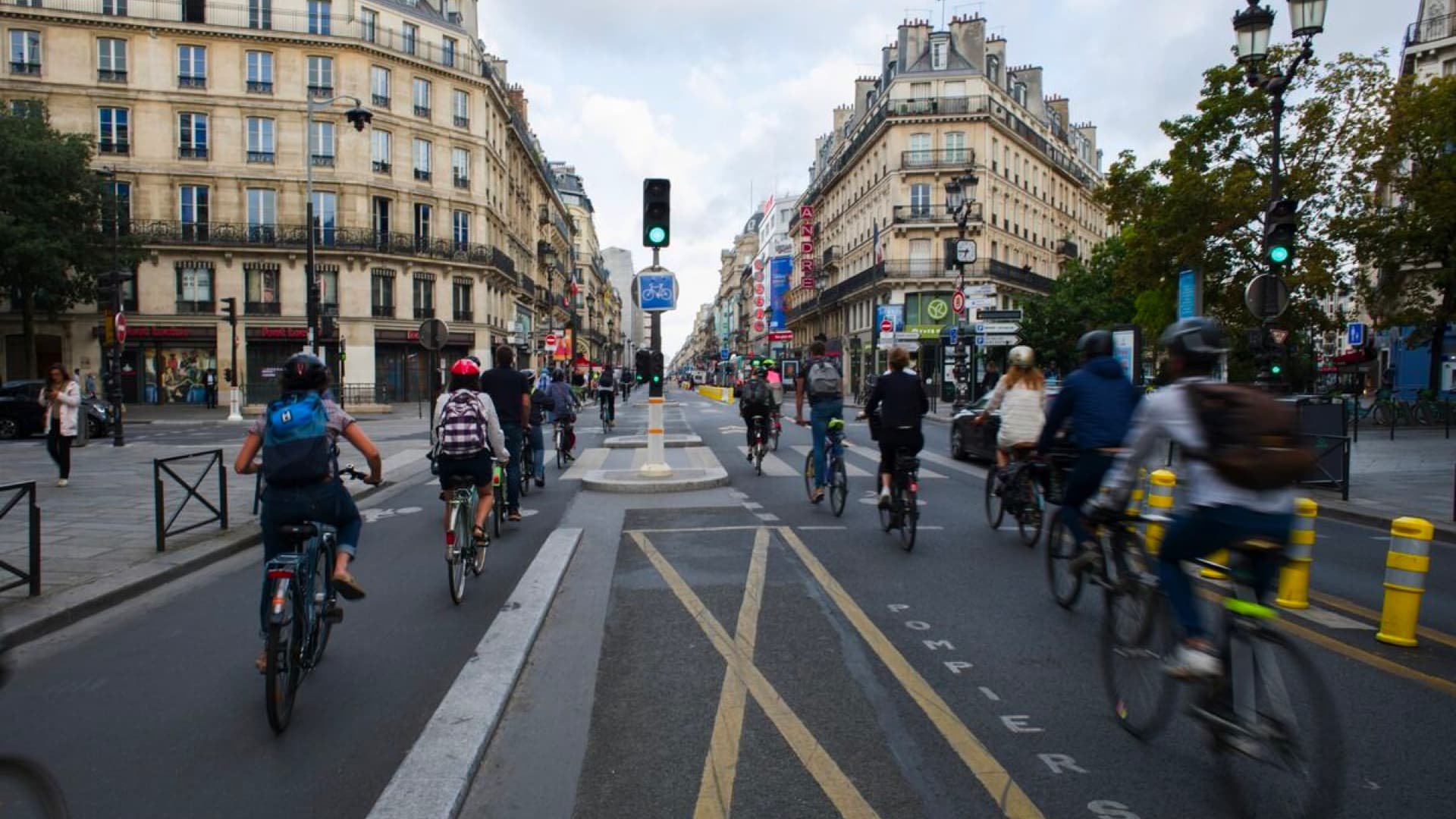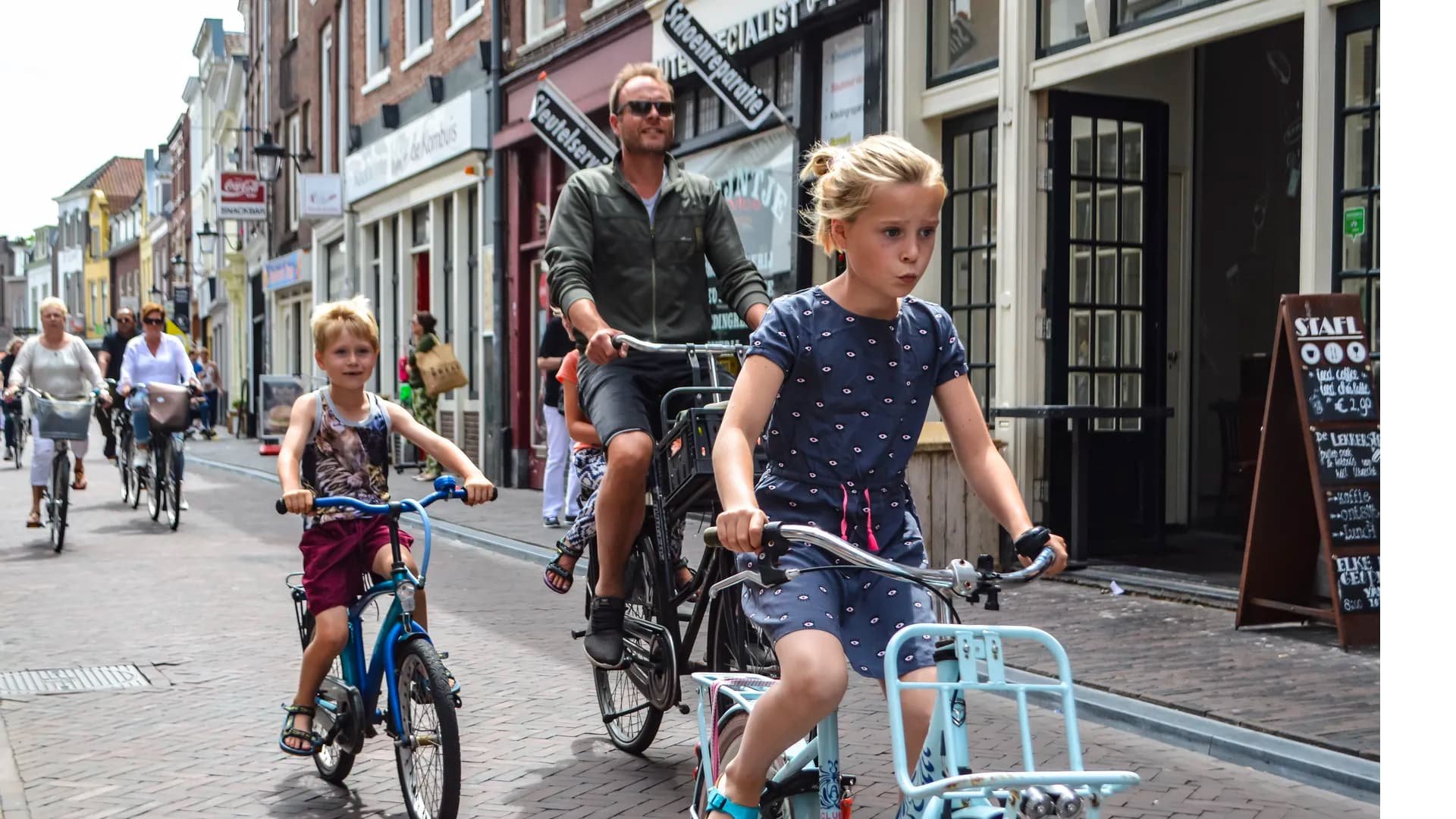Use what works
There’s no need to reinvent the wheel, or the street, to make micromobility a safe, comfortable, and convenient option available to everyone. Many examples of effective and inclusive infrastructure exist around the world, including here in New York City, that could easily be applied on the Upper West Side.
Converting the roughly forty residential cross streets on the Upper West Side to low-traffic streets that allow micromobility and pedestrians through in both directions, while limiting motor vehicles to local access, would be a low-cost way to create a crosstown network of people-priority streets virtually overnight—all while reducing noise and air pollution and increasing social interactions.
Here’s an example from London. And, Barcelona.
Image credit: Islington Council
With more and different uses, devices, and abilities come different needs for different speeds, all operating with ample space to feel comfortable and keep everyone safe. The avenues on the Upper West Side are wide enough for multiple, generously sized micromobility lanes, that would help convert car and truck trips into scooter and bike trips.
Montreal and Paris are doing it. New York City acknowledges it. Here’s how wide lanes should be. And here’s the case for getting it done.
Image credit: Nathan Laine/Bloomberg
The Upper West Side is flanked by two sprawling parks and nothing connecting them. It doesn’t have to be this way. Start by turning West 72nd Street into a tree-lined, people (and pollinator) pathway, connecting the Hudson River through Central Park, all the way to the East River—an instantly iconic thoroughfare that would become a destination in itself.
Greenways are a thing in NYC. There’s even a master plan. And a coalition.
Image credit: NACTO
The Upper West Side doesn‘t have a single protected intersection. Our field survey illustrated just how inaccessible that can be, especially for more vulnerable street users, with protection disappearing where riders need it the most. As with protected bike lanes, protected intersections create safer, more predictable conditions for all street users, and they should be standard.
Here’s how to protect an intersection. This is how the Dutch do it.
Image Credit: Walkable City Rules, Jeff Speck (Rule #59)
For micromobility to be viable for more people and more trips, riders need a secure place to leave devices at their destination, whether it’s all day at work, overnight at home, or at Penn Station for the weekend.
NYC has an elegant home-grown solution. We can aspire to be like the Netherlands.
Image credit: Oonee
Focus on outcomes
More important than counting lane miles is creating broadly inclusive infrastructure that is safe, comfortable, and convenient to use. And the best way to do this is by designing it to meet the needs of the people using it.
The point of any transportation infrastructure is to get people where they need to go as efficiently and elegantly as possible. The more seamless and joyful the experience, the happier the user, and the more eager they are to repeat it. This virtuous cycle keeps people riding and encourages more to try. Here’s how Copenhagen centers people.
Image credit: People for Bike (via NACTO)
Infrastructure that doesn’t get people where they need to go is far less likely to be used. On the other hand, if micromobility infrastructure makes getting on a scooter or bike the easiest and most convenient option, people of all ages and abilities will be more likely to choose it.
Image credit: Modacity
The limits to who uses micromobility are largely determined by how inclusive the infrastructure is. From adaptive wheelchairs to right-sized urban freight vehicles; from grandparents to grandkids. For micromobility to work it has to be designed with all users and uses in mind.
Image credit: Ted Shaffrey (AP)
Imagine riding down a street and getting a green light at every intersection so you never have to put your foot down. Or riding on a surface so well-made and maintained that it feels like you’re gliding. Centering care as a value in infrastructure goes a long way to creating a pleasant user experience and helps make micromobility an attractive and joyful choice for more people.
Image credit: City of Copenhagen
Just do it
At the most basic level, micromobility infrastructure is safety infrastructure. Through that lens alone we should act without delay to ensure an accessible, comprehensive network. But the benefits extend beyond safety to the very fabric of our neighborhoods and determine who has access to basic mobility choices and the economic, health, and social opportunity that affords.
Humanize the issue through personal stories, and communicate those stories effectively to elected officials.
Keep values at the center of the conversation—care, equity, sustainability, health, social and economic opportunity.
Communicate the urgency to anyone who will listen.
Insist on a higher standard. New Yorkers deserve world class infrastructure, not poorly maintained half measures like much of what currently exists.
Show unqualified support for a connected, protected network that prioritizes all ages and abilities. Make this a value you hold and vigorously promote it.
Use your position to insist city agencies move more quickly to reprioritize street space to favor people over cars. We need a network NOW, not a decade from now. Lives depend on it.
Be curious. Get on your bike or scooter and experience the infrastructure first hand. Talk to all people who actually use the infrastructure every day to understand their needs.
Meet the moment and be a leader. Understand that the right thing is ultimately the popular thing. Everyone benefits from cleaner air, quieter neighborhoods, and safer streets.
Stay informed! There have never been more resources available about the global movement to create human-centered cities. Watch, read, and engage with people who care about these issues and make it personal to you.
Speak up! Call and write elected officials to make sure they hear from people who value equitable mobility choices and not just from the small minority who value free parking.
Share the love! Tell anyone who will listen how joyful and liberating it is to move around using micromobility, and invite your hesitant, curious friends to go for a ride.
Keep riding! The more people who ride, the more normal it will become, and the faster change will happen.









